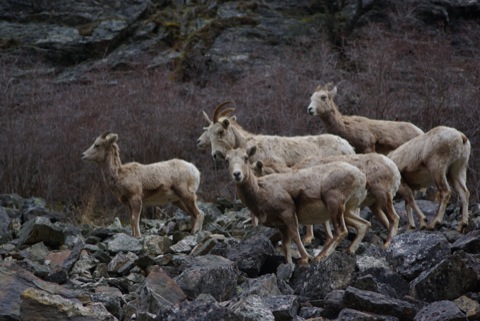Oil and gas development of the Wyoming Mountain Range is very unpopular-
Folks in NW Wyoming are rejoicing that the Bridger-Teton National Forest has announced the rejection of some of the last of the requested natural gas leases in the Wyoming Mountain Range 20 miles NW of Pinedale (30 miles southeast of Jackson Hole). Forest rejects oil, gas leases in Wyo. Range. “[Forest supervisor] Buchanan follows [former supervisor] Hamilton’s draft, decides against development 35 miles south of Jackson.” By Cory Hatch, Jackson Hole News and Guide.
Wyoming Range Legacy Act of 2009
The beautiful and wildlife rich mountain range’s protection from massive natural gas development has united different kinds of folks in northwestern Wyoming. In August 2009, most of the Wyoming Range and the adjacent Salt River Range (1.2 million acres) were withdrawn by Act of Congress from oil and gas development in the “Wyoming Range Legacy Act,” sponsored by most of Wyoming’s congressional delegation.
The Wyoming Range is still not entirely protected-
This does not mean the mountain range is entirely protected. Among the very first gas wells developed in the general area were in the foothills of the Wyoming Range way back in the late 1970s at Riley Ridge, which has been massively industrialized. As proposals to explore multiplied citizens organized to head off massive development of the entire mountainous area along the the Idaho/Wyoming border. Slightly less than 50,000 acres south of Bondurant slipped through — were leased — in the 1990s.
The Noble Basin drilling controversy-
Now PXP Energy wants to drill 136 wells in the area near Boundurant (referred to as the “Noble Basin” area) much to the outrage of local and non-so-local residents. At a hearing in Jackson, Wyoming last week about 98% of the testimony opposed the Noble Basin development. 1/20/11. Noble Basin sparks anger. Jackson Hole Daily. The advantage lies with PXP, however, because the act of leasing public land is the most critical stage of oil and gas development. That’s because a lease creates a private property right that can only be extinguished by purchasing it back. PXP’s drilling probably can’t be stopped by any action except public opinion or very restrictive stipulations imposed in the actual drilling.
Citizens can send their comments on regulation of the drilling to the Bridger-Teton National Forest, supervisor Jacqueline Buchanan, P.O. Box 1888, Jackson, WY 83001. Comments can be emailed to comments-intermtn-bridger-teton-big-piney@fs.fed.us with the subject line “Eagle Prospect and Noble Basin MDP DEIS.” The plan is available at http://www.fs.fed.us/r4/btnf/projects/. Comments are due Mar. 10.
Not all opposed to drilling the range-
Of course, the oil and gas industry supports drilling the area as does Wyoming’s lone member of the U.S. House, Republican Cynthia Lummis. Lummis, while nominally a U.S. Representative, in practice pretty much represents oil rather than the state.
We have posted quite a few articles on protecting the Wyoming Range, but the blog hasn’t shown much interest.
I think this might be because the very name, Wyoming Range, might prompt those not from Wyoming to think the article is about rangeland in Wyoming rather than a large chain of mountains which are full of wildlife, especially elk. The range also has a small and declining bighorn sheep herd that is constantly threatened by disease from domestic sheep grazing. Western Watersheds has been trying to improve the livestock grazing in the area through the organization’s Wyoming Office.
As some have mentioned, it might also be that the area is psychologically hidden because the Tetons, Yellowstone, and the Wind River Mountains immediately come to mind when folks think of the state of Wyoming.
– – – – –
More information
Read the rest of this entry »









































